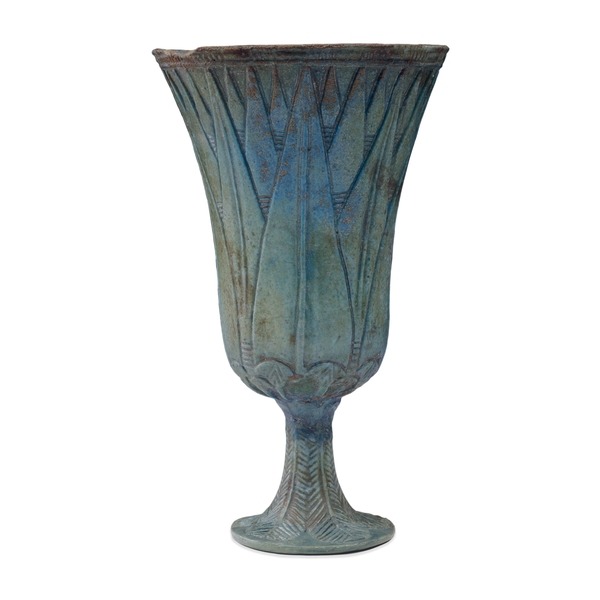
Height: 15.3 cm
Faience cup in the form of a blue lotus - A symbol of rebirth
Said to be from Tuna el-Gebel, Egypt
Late New Kingdom (1550-1070 BCE) or Third Intermediate Period (1070-661 BCE)
A number of beautiful faience vessels in the shape of the lotus are known from ancient Egypt. Early examples, like this one, are mostly decorated with petals of the lotus flower, while later ones are more often decorated with scenes.
The precise function of these vessels is not clear, though they are heavy with symbolism. The lotus itself is a symbol of rebirth and new life. This symbolism derives from one of the creation myths: the sun-god and creator, Re, is said to have appeared on a lotus, which had previously grown on the Primeval Mound (the seat of creation). The choice of faience for the material is clearly deliberate, as its shiny and brilliant nature made it worthy of association with the sun-god; the blue-green colour is also associated with rebirth and new life.
The context in which such vessels were found is unknown, even though there was clearly a concentration of them discovered in the area of Tuna el-Gebel in Middle Egypt.
Via http://bbs.artron.net/viewthread.php?tid=913908&extra=page%3D1&page=13
